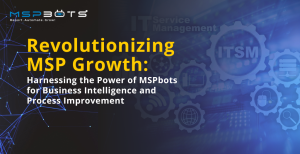
As enterprises face economic challenges that are driving some budget cutbacks, a report from market research firm Gartner shows that public cloud spending is expected to grow in 2023. How can that be?
The report, which covers all cloud categories including infrastructure as a service (IaaS), software as a service (SaaS), and platform as a service (PaaS), showed that public cloud spending is slated to reach a total of $591 billion in 2023, a 20% increase from $490 billion in 2022. IaaS, such as AWS, Google, and Microsoft, is expected to see the highest growth in 2023 with spending expected to reach $150 billion. That’s up 29% from $115 billion this year.
What should we make of all this? How should enterprises consider the continued use of cloud computing?
First, migration to the cloud remains a constant, with IaaS being the preferred target. This does not seem to be slowing down with any downturns so far. As I’m hearing repeatedly, companies are not stopping because they view talent as too hard to recall once they have laid people off and they expect any economic downturns to be short lived. That’s a much healthier response than in days gone by when business slowdowns were followed by a wave of layoffs, with IT staffers first on the chopping block.
Second, we are seeing more complex things occurring. The move to multicloud is driving more architectural challenges, which most enterprises don’t want to interrupt. Moreover, moving applications is changing from a lift-and-shift approach to more refactoring, with some moving to cloud-native deployments.
The good news is that cloud computing has morphed into true strategic technology that enterprises view as necessary for business success. This means cloud computing is now “table stakes” for enterprises to take their business to the next level. I find that to be the case considering the amount of innovation that the market expects from all businesses, no matter if you’re manufacturing tires or building robots. Digital transformations are returning more than 100 times the investments, depending on who’s doing them, and company leadership and investors are hip to that now.
This does not mean that everything’s perfect with IT generally and cloud projects specifically. I’ve covered the downsides of cloud computing a great deal because I believe we need a realistic view of any technology, cloud included. At some point, technology needs to return value back to the business, and many businesses are not seeing it yet with cloud. Some are raising the alarm and holding back funding on additional cloud computing projects.
With a few exceptions, these are mostly self-inflicted injuries. Adequate planning and having an overall strategy make the difference between cloud computing success and failure. The issue is not about whether cloud projects are funded, but a lack of understanding of how cloud technology works, both in the narrow and in the wide. Companies need to solve many little problems, and solving those little problems over and over leads to more strategic value around the use of cloud computing overall.
Some organizations are attempting one-size-fits-all cloud migration strategies, such as lifting and shifting all applications and data, no matter what. Some are taking the opposite approach and containerizing everything no matter what. Both groups are quickly understanding that this just leads to future costs that could have been avoided—or, more damaging, business opportunities that are going unharvested.
Cloud computing is not completely downturn-proof, at least not forever. Eventually, the tougher questions will be asked. Some enterprises will show good progress, while others will attempt to spin their slower progress and lower expectations.
What’s most interesting to me is that both the enterprises that fail and the enterprises that succeed with cloud computing are spending about the same amount of money. What most determines success or failure is the skill of those who are carrying out cloud computing deployments and not the technology itself. People still make the largest difference.
Copyright © 2022 IDG Communications, Inc.
Originally posted on November 4, 2022 @ 6:12 pm


